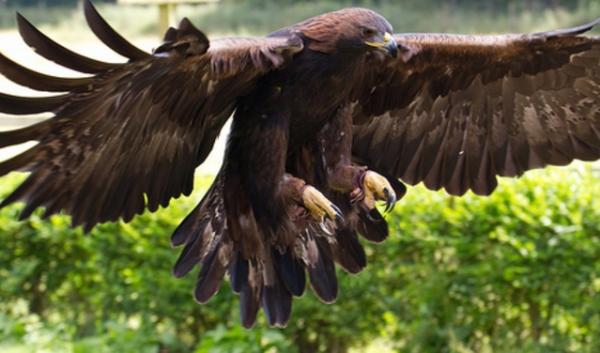
By Courtney Flatt, Northwest Public Radio
It’s essentially a fight between conservation-minded groups. On one side, renewable energy companies want to build wind farms. On the other side, bird advocates don’t want those giant, blade-spinning wind turbines to harm bald and golden eagles.
Now, a national bird conservation group is going to sue the federal government over a 30-year permit it will issue to wind farms.
The permit will allow wind farms to legally kill a certain number of eagles. The birds are shielded by the Bald and Golden Eagle Protection Act.
Matthew Stuber, U.S. Fish and Wildlife Service Region 1 eagle permit coordinator, said take permits have been an important management tool since 2009.
“A permit allows an activity to happen that needs to happen. And in doing so, it gets the best possible thing for the eagles. We’re actually able to get conservation, and hopefully in the long run, prevent that nest from begin disturbed at all by that activity.” Stuber said.
The U.S. Fish and Wildlife Service originally wanted to grant five-year permit. West Butte Wind Farm in Central Oregon was the first facility in the nation to apply for a five-year “take” permit.
But the wind industry complained that five years was not enough time to find financial backers and get the project up and running. It wanted more continuity.
Now, to provide that continuity for wind farms, the service has extended the permit to 30 years. Permits must be reviewed every five years.
The American Bird Conservancy is suing the U.S. Department of Interior over the 30-year rule.
Michael Hutchins, the American Bird Conservancy’s bird-smart wind energy coordinator, the 30-year permit will make the process less transparent.
“Data on things like bird fatalities at a particular institution might be hidden from us, and therefore, it would be very difficult to do a legitimate review of what is exactly going on at any one of those facilities,” Hutchins said.
For its part, the Fish and Wildlife Service says this 30-year permit means regulators will have to anticipate more problems ahead of time.
“Before we issue a permit, since it’s a lot longer time frame, we need to try to foresee more possible situations and have a better, what we call, adaptive management plan as a part of these permits. That way, when we come in for the five-year check-in, we have things on paper of what we’ll do to respond to certain situations,” Stuber said.
Companies mitigate for eagle deaths upfront. One way to do that is to retrofit existing power poles, where historically, a lot of eagles have been electrocuted when their wings touch two power lines at the same time.
Fish and Wildlife officials say they can quantify how many eagles will be saved be retrofitting a certain number of power poles.
Hutchins said the American Bird Conservancy is not against wind energy. He said wind farms need to be sited properly to not disturb or kill eagles, even if they are producing green energy.
“It’s just a really big price to pay. I don’t think that we can see these resources as collateral damage to try to win the fight on climate change,” Hutchins said.


